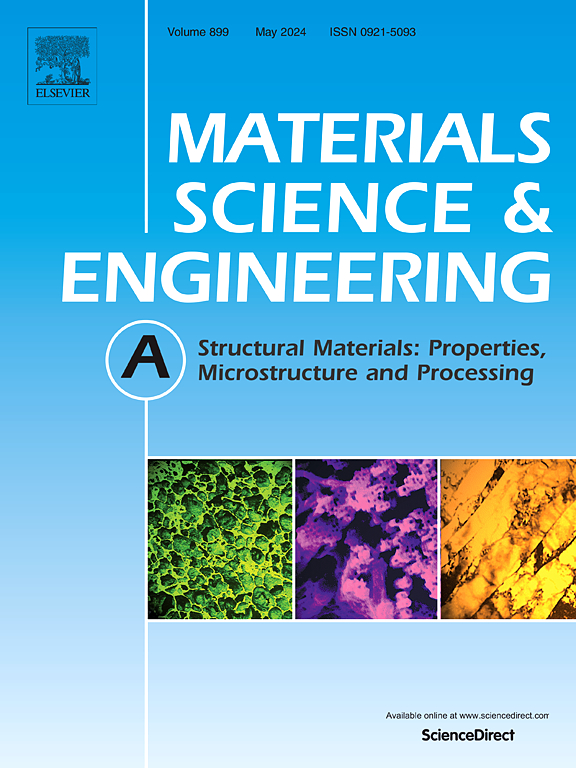双纳米颗粒在锻造Al-4.5 wt% Cu合金中促进强度-延展性协同作用
IF 7
2区 材料科学
Q1 MATERIALS SCIENCE, MULTIDISCIPLINARY
引用次数: 0
摘要
本研究提出了一种结合半固态等温处理(SSIT)、双挤压和时效的创新热机械复合工艺,以实现Al-4.5 wt% Cu合金优异的强度-塑性协同。SSIT工艺有效地将初生粗Al2Cu相细化为层间间距为~ 58 nm的纳米级共晶结构。随后的双重挤压使这些结构破碎并分散成纳米颗粒。再加上时效过程中θ′/θ″纳米沉淀的动态形成,合金形成了嵌入在双峰晶粒结构中的双纳米颗粒强化系统,其特征是粗晶区和细晶区交替存在。该合金的抗拉强度为472 MPa,屈服强度为348 MPa,伸长率为16.1%,具有良好的力学性能。该研究表明,双纳米颗粒与双峰晶粒结构的耦合可以实现双相位错钉住,同时减轻局部应力集中,为高性能铝合金的工程设计提供了一种可扩展的策略。本文章由计算机程序翻译,如有差异,请以英文原文为准。
Dual nanoparticles in a wrought Al-4.5 wt% Cu alloy to promote strength-ductility synergy
This study proposes an innovative thermomechanical composite process combining semi-solid isothermal treatment (SSIT), double extrusion, and aging to achieve superior strength-ductility synergy in Al-4.5 wt% Cu alloy. The SSIT process effectively refines primary coarse Al2Cu phases into nanoscale eutectic structures with an interlamellar spacing of ∼58 nm. Subsequent double extrusion fragments and disperses these structures into nanoparticles. Coupled with the dynamic formation of nanoprecipitates during aging, the alloy develops a dual nanoparticle strengthening system embedded within a bimodal grain architecture featuring alternating coarse/fine-grained zones. The processed alloy demonstrates remarkable mechanical properties with a tensile strength of 472 MPa, yield strength of 348 MPa, and elongation of 16.1 %. This work demonstrates that coupling dual nanoparticles with bimodal grain structures enables dual-phase dislocation pinning while alleviating local stress concentrations, providing a scalable strategy for engineering high-performance aluminum alloys.
求助全文
通过发布文献求助,成功后即可免费获取论文全文。
去求助
来源期刊

Materials Science and Engineering: A
工程技术-材料科学:综合
CiteScore
11.50
自引率
15.60%
发文量
1811
审稿时长
31 days
期刊介绍:
Materials Science and Engineering A provides an international medium for the publication of theoretical and experimental studies related to the load-bearing capacity of materials as influenced by their basic properties, processing history, microstructure and operating environment. Appropriate submissions to Materials Science and Engineering A should include scientific and/or engineering factors which affect the microstructure - strength relationships of materials and report the changes to mechanical behavior.
 求助内容:
求助内容: 应助结果提醒方式:
应助结果提醒方式:


